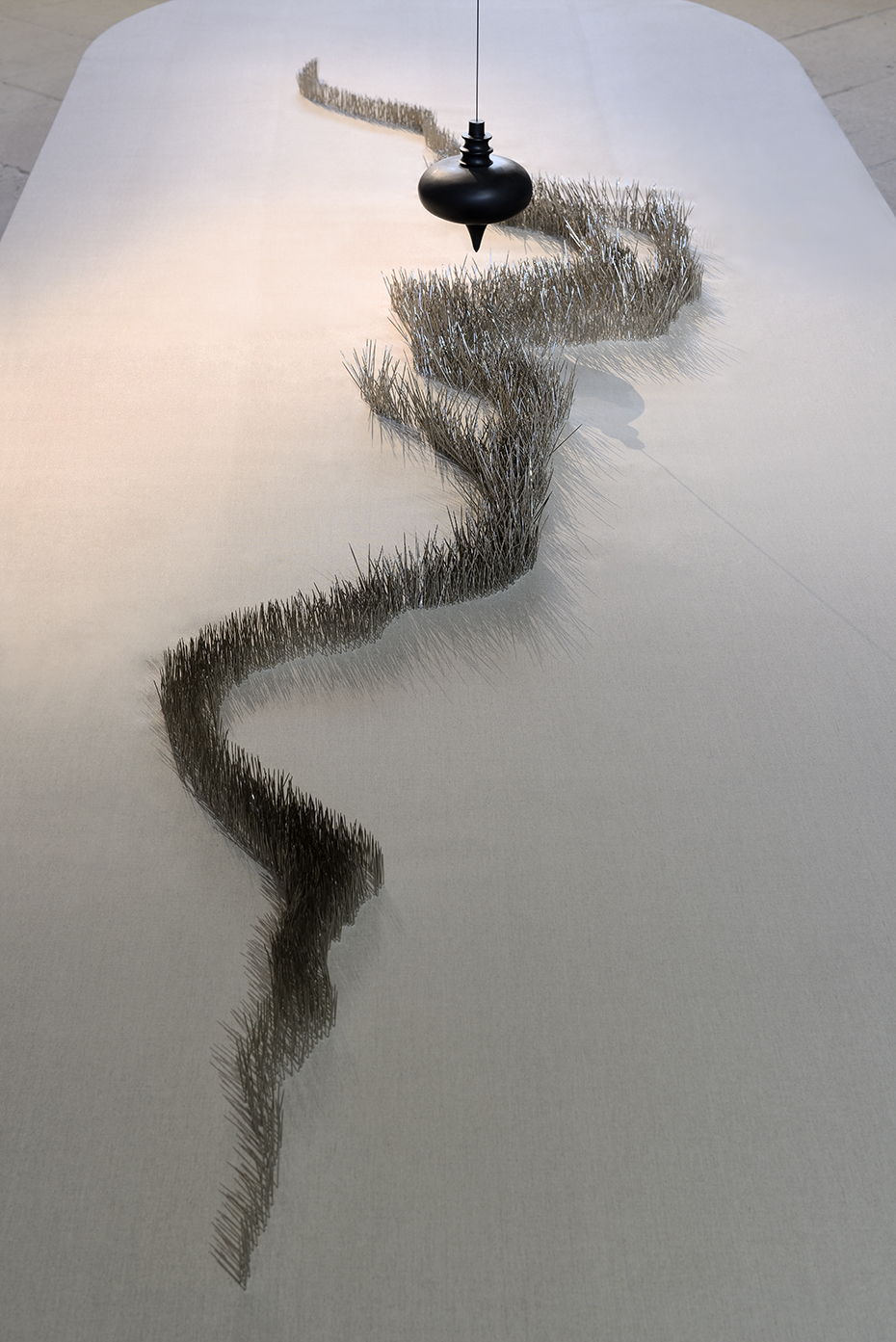Les ondes sonores émises par les bols chantants, converties en impulsions magnétiques, déterminent les mouvements balanciers d’un imposant pendule aimanté, suspendu à la voûte. Son passage impulse la chorégraphie oscillatoire d’un tapis d’épingles qui en adoptent la cadence, comme sous l’effet d’un métronome poly-directionnel, au tempo différencié. Intriguée par les très grandes quantités d’épingles commandées vers 1720, consignées dans les livres de comptes de l’abbaye, Charlotte Charbonnel les connecte à l’architecture en reprenant la forme des ogives des voûtes et des fenêtres pour confectionner le socle recouvert d’une toile de lin sur lequel elle les a piquées. La pointe élancée donne un élan à la pièce et favorise la circulation des corps, une dynamique redoublée par celle de l’aimant. Engagé dans un mouvement récursif d’attraction-répulsion, le mécanisme se prête autant à la contemplation, berçant la rétine, qu’il évoque le labeur répétitif des moniales et la douleur qu’il inflige aux corps. Entre flux et reflux, son rythme reproduit la structure cyclique de l’organisation des tâches domestiques et spirituelles des cisterciennes, auxquelles ces milliers d’épingles synchronisées donnent un nouveau visage. Nouant un nœud symbolique entre couture et torture, l’artiste mobilise également l’imaginaire de la radiesthésie ou celui de l’acupuncture dans la pensée orientale, comme si elle cherchait à offrir à la communauté la possibilité d’un soin posthume.
Florian Gaité
The sound waves emitted by the singing bowls and now converted into magnetic impulses govern the swinging of an imposing magnetic pendulum hanging from the vault. Its passing choreographs the oscillation of a layer of pins that fall in with its cadence, as if regulated by a multidirectional, variable tempo metronome. Intrigued by the vast quantity of pins ordered around 1720 and listed in the abbey’s account books, Charlotte Charbonnel has set up a relationship with the architecture by using the shape of the windows and the ribs of the vaults to create the linen-covered base bristling with pins. The slender point of the pendulum gives the piece an impetus, in a dynamic increased by that of the magnet. Engaged in a recursive movement of attraction-repulsion, the mechanism lends itself as much to contemplation, to a cradling of the retina, as to the evocation of the nuns’ repetitive labour and the suffering it inflicted on their bodies. Ebbing and flowing, its rhythm reproduces the cyclical structure of the domestic and spiritual tasks to which these thousands of synchronized pins give a changed countenance. Tying a symbolic knot between sewing and torture, the artist also mobilises the mystique of dowsing, or acupuncture in oriental thought, as if trying to offer the community of nuns the possibility of posthumous healing.
Florian Gaité
Crédit photo : Catherine Brossais



